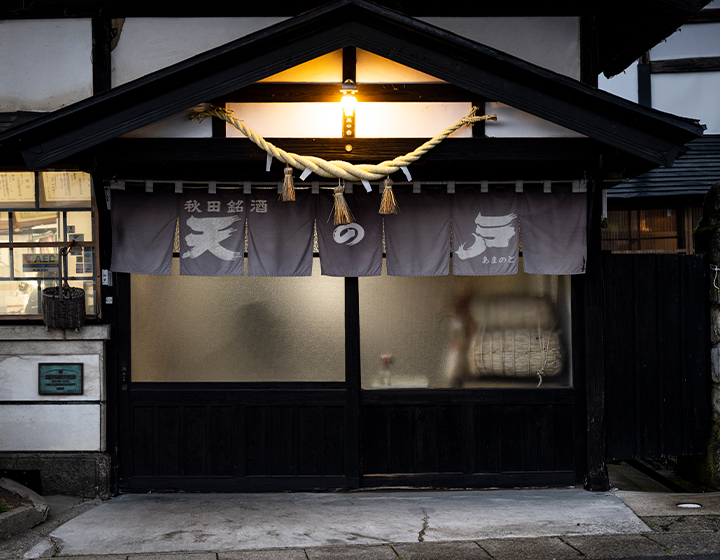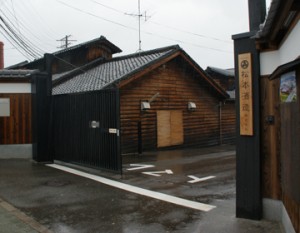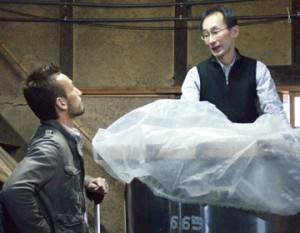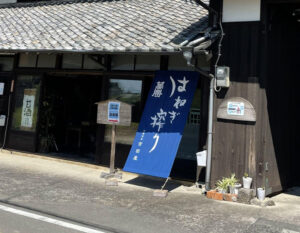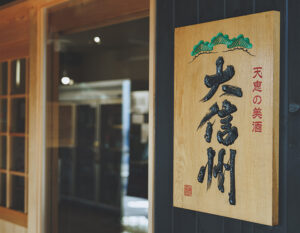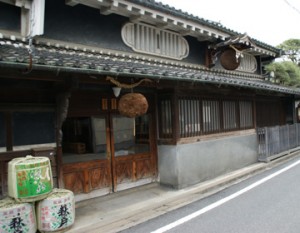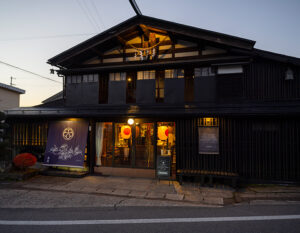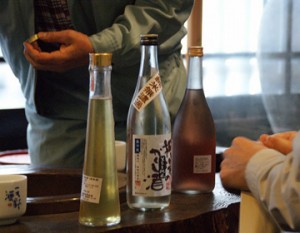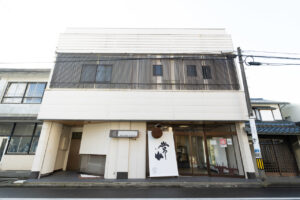The Yokote Basin in Akita Prefecture, known as the largest basin in Japan, is surrounded by majestic mountains and is one of the largest breadbasket regions in Japan, with first-class rivers and their tributaries flowing slowly through it.In the Asamai district of the Hiraka Plain in the south-central part of the prefecture, beautiful rice paddies are flooded with water in May.The Asamai Shuzo brewery is located in the center of the town amidst these vast rice paddies.
Amano-do” representing Asamai Shuzo and its commitment to pure rice
The rivers that moisten the Yokote Basin have long created a land rich in blessings, some of which became subsoil water and created the “Biwanuma Cold Spring” spring system.Hiraga, nurtured by abundant nature and blessed with both land and water, was a perfect place for sake brewing, yet there were no sake breweries.In 1917, the Asamai Sake Brewery was established in Hiraka-cho, Yokote City.The brewery has made a name for itself as one of Akita’s representative breweries, winning the gold medal at the National New Sake Competition for the fifth consecutive year, a first for Akita Prefecture.The founder, Munemitsu Kakizaki, named the sake “Amano no To” after an old poem, “The door of heaven quietly dawns and the sun shines through the green leaves of the cedar trees on Mt.Amano-no-do” refers to the “Amano-no Iwato” in Japanese mythology, which is well known to everyone.
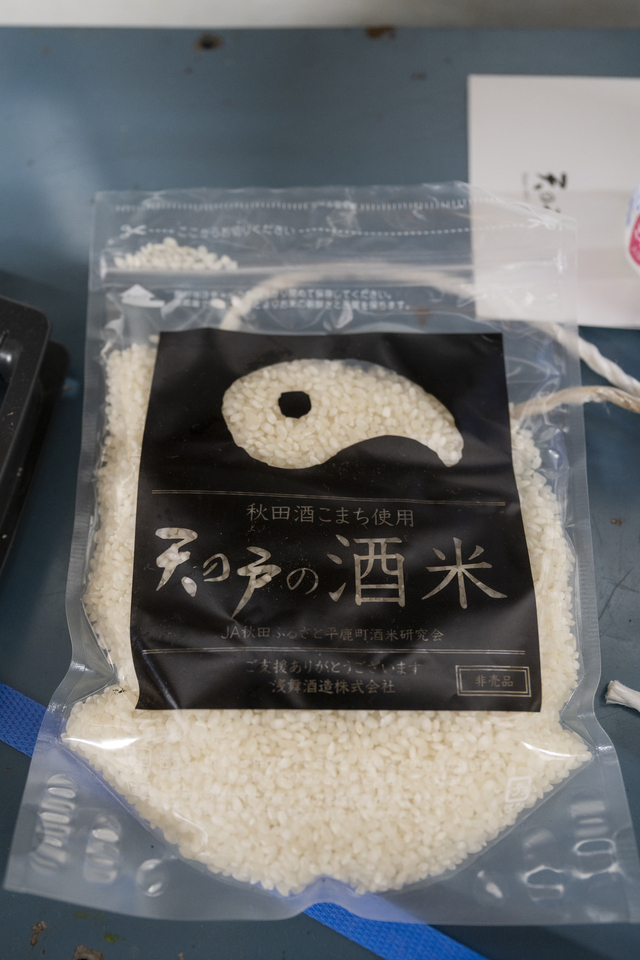
All of the sake rice used by Asamai Sake Brewery comes from the Asamai area, which is within a 5 km radius of the brewery, and was first produced in 1988 when the previous president, Hidemori Kakizaki, established the Hirashika-cho Sake Rice Research Association (now the JA Akita no Furusato Hirashika-cho Sake Rice Research Association) to develop the environment for producing sake rice with local farmers.This was made possible by the fertile land of the Yokote Basin.In 2011, all sake was made with junmai (pure rice) in order to reflect the deliciousness and flavor of Yokote’s rice in the sake.Sake is born in the rice paddies” is the company motto, says Tsuneki Kakizaki, the current president, who hopes to pass on the Asamai Brewery’s commitment to rice to the next generation.With rice consumption declining, the situation for farmers is difficult even in Yokote, a major rice-producing region.Therefore, Mr. Kakizaki is still actively calling on farmers in the Asamai Brewery area to produce sake rice for him.
Traditional methods and modern flavors and
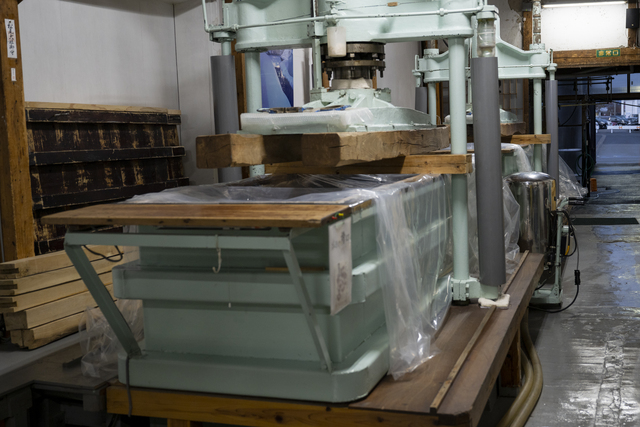
Rice brought to the brewery is steamed and fermented in a traditional Japanese kettle, and then squeezed in a koshikibune, an old-fashioned vat.The vat pressing method, which is becoming less common today, is a time-consuming process.Sake bags filled with unrefined sake are stacked in the tank, and at first the weight of the bags squeezes out the sake little by little.After that, pressure is slowly applied to the sake, and each drop of sake is squeezed out.Kakizaki says this is “a necessary process to produce sake that is full of rice flavor.While using local rice and adhering to the traditional style of sake brewing, Asamai Brewery does not only make sake with a traditional flavor.
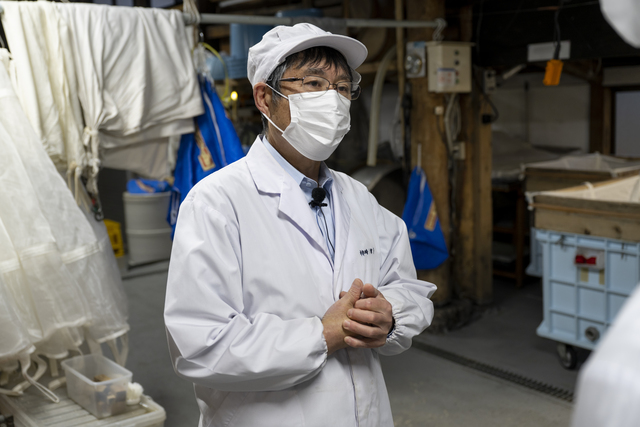
The tastes of today’s consumers are also important.We are also focusing on creating light-flavored, aromatic, food-friendly sake,” says Kakizaki.While keeping the traditional sake brewing methods that have been used for more than 100 years, Kakizaki aims for a modern, contemporary taste.I don’t know if it’s the best, but the rice and water in Yokote are the best we have,” Kakizaki said.It is the brewery’s job to reflect this in the sake brewing process.We sometimes release sake with a new quality in limited quantities and see how it goes,” says Kakizaki.The brewery’s sake brewing techniques are stable because it has a solid base of high-quality rice and water.Above all, there is much to be gained by continuing to use local rice for many years.By touching and smelling the rice, one can get a good idea of how the rice will turn out that year.The next question is how to work with the rice and how to produce it.
Asamai Brewery’s sake, brewed only with locally available ingredients, is imbued with the spirit and beliefs of the brewers, who were captivated by the beauty of this region and wanted to preserve and pass it on, aiming for “true Akita local sake.



